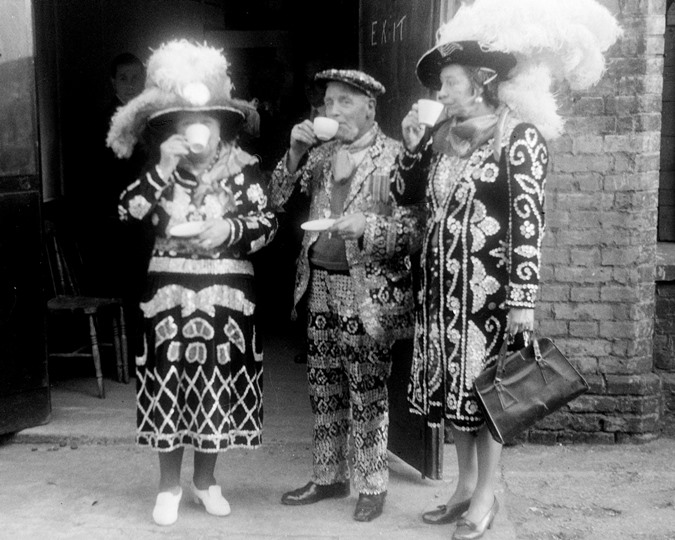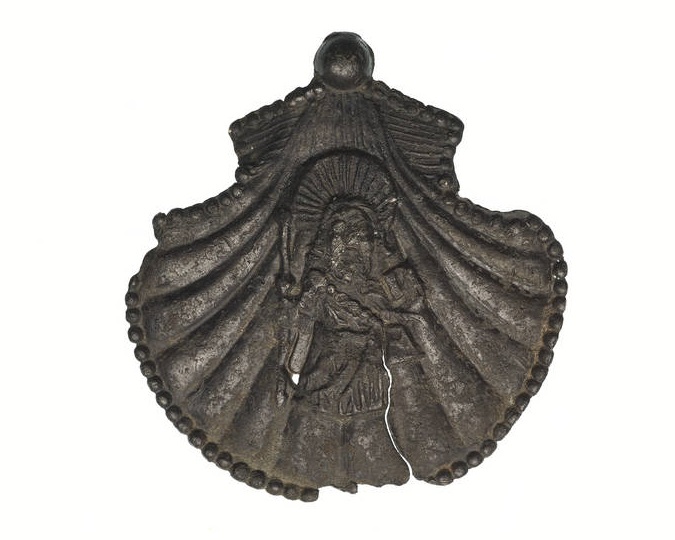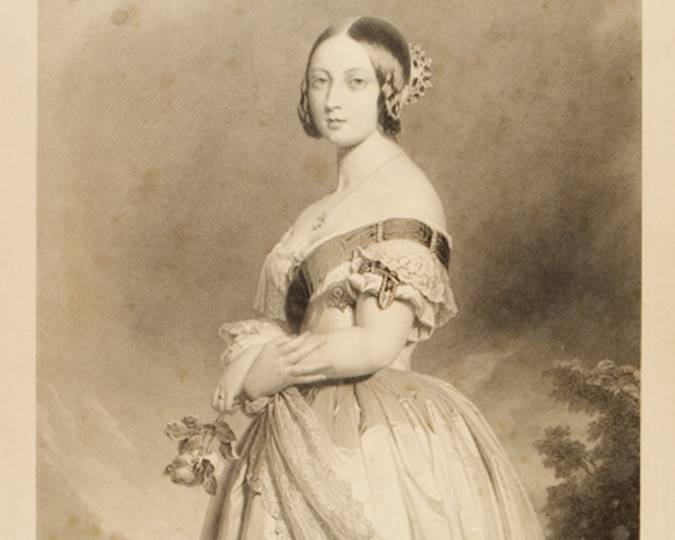Matthew Hodson, chief executive of NAM – Aidsmap, was the creator of the first LGBT exhibition here at the Museum of London in 1999, Pride and Prejudice: Lesbian and Gay London. Twenty-five years later, we revisit an interview by our Proud History Champion Michael with Matthew, discussing everything from museums to activism and how the LGBTQ+ community has changed through the years.
Michael: Tell us about what you were doing at the museum in 1999
Matthew: I used to be an actor and like most actors I was unemployed a lot. I got a job working in admin in the interpretation unit at the Museum of London, and it was one of the lowliest job imaginable.
So, in terms of Pride and Prejudice, how did you become involved in the exhibition?
Well, one of the reasons I'm really excited to be back and talking with you right now is that when I was at the Museum of London, there weren't many people who were out about being LGBT. I was one of the very, very few, a small handful out of hundreds of staff members.
Back then, whenever anything which was related to LGBT came up, someone would ping me an email. On Pride Month in 1998, the museum wanted to put on an exhibition of photographs taken at various pride marches. But they wanted to call it Pride and Prejudice and this really annoyed me.
If you're going to call it Pride and Prejudice, you need to talk about the prejudice that we face and the exhibition at that stage wasn't doing that.
I got quite angry about it and actually I think I stormed out the building, and then stormed back in again and furiously started writing this email saying, This is what it needs to be about.
And they said, well, that sounds great. Why don't you put it forward to the exhibition's committee?
So, I then sat down and wrote a proposal for an exhibition which would examine the lives of LGBT people in London through the ages.
And that was the start of what became Pride and Prejudice: Lesbian and Gay London.
And it is regarded as one of the first LGBT exhibitions in the UK?
I think it was the first exhibition at any major UK Museum which was about LGBT lives - there had been exhibitions before about LGBT artists, but not actually about us as communities, or talking about legal restrictions that we faced, about social acceptance or lack of acceptance and all of those issues, talking about activism and the day to day mundanity of our lives as well. That's what I really wanted to capture in the exhibition.
I wanted people who didn't know a lot about LGBT lives to see not only that we are oppressed now but that we were throughout history. That we have always been a part of London's history.
So much of LGBT lives have been erased or concealed or destroyed, that we have to make a special effort to actually say no, here, look, here's the evidence, here's this fragment, which actually says that we were there - that we've always been there.
I agree, most of our lives have been told through criminal records as negative connotation, while you were trying to show the joyful side of queer lives.
Most museums and galleries are celebrating LGBTQ+ History Month and that is because the law changed around 20 years ago. What was it like trying to arrange an exhibition while Section 28 was still in place?
Section 28, or Clause 28, which became section 28 as a piece of legislation, was flawed. It didn't actually do what it set out to do. What it did do was it created an environment where we were too scared to talk about homosexuality and where local authorities were too scared to fund things which may be seen as promoting homosexuality.
Suddenly the Government was saying: this group of people are inferior, and they are wrong, and they are sick, and children must be protected from the very concept of them. But I think that often it's through adversity that we make progress. You know that it was actually the challenge of Section 28, which resulted in some of the biggest LGBT gatherings?
Back then, I thought that it might prevent us from doing the exhibition. But the people at the museum were really supportive of it, because it was a story that hadn't been told.
And now, I mean now it's wonderful that every museum has a LGBT history month and is looking at representation in their collections.
That was something that had never happened before back then, you know, something I’m obviously proud of. My little exhibition may have been the first one of its kind.
What were the main topics you wanted to address in the exhibition?
What I was excited about was showing some of the progress that has been made, but also being aware that progress towards equality isn't necessarily a (pun intended) straight path.
There were periods in our history when LGBT lives were perhaps a bit more commonplace. And then there are other periods where it gets pushed very much underground and trying to retrieve some of that information, trying to honour those lives, that was important to me.
And finally, it was about honouring the lives of people from our more recent history.
Having rainbow flags and men kissing on the poster was pretty big stuff. And to have it in the space of, you know, an institution like the Museum of London, it was a powerful feeling.
The museum has just been made a safe space for LGBTQ people as part of the Safe Space Alliance, so the community can recognise that we will always be a Safe Space for them.
That's brilliant. I'm so excited about the whole program with events that you've got going on for [the 2021] LGBTQ+ history month, and the incredible Sacha Coward, who is just wonderful.
Yes! We're also going to be releasing videos on our Labrys earrings and on Molly Houses. It shocked me to discover that there were more Molly Houses in Georgian times than there were gay bars in the early 2000s. You always think you're the pinnacle of LGBTQ life sometimes.
Exactly. When I was in my early 20s, we first had gay bars with windows that weren't blacked out, and you know we just thought, well, this is it. We have attained a higher level now, there will never be greater liberty and equality than this. We have windows.
Let’s talk about what happened after the exhibition.
So the weird thing was, when I got the exhibition concept ready and it was green-lighted by the committee, I was concerned that I would just not be able to do my interpretation role as well the exciting curator bit.
So I said, would it be okay to curate this exhibition if I didn't work at the Museum of London anymore, could you actually just pay me as a consultant?
And they said yes and that’s when I thought I should go and see if I can find some other work! In 1998 I was also diagnosed with HIV, which was quite a blow.
But I saw a job opening, an administrative support role for an organization called Gay Men Fighting Aids. And I thought, well, that's probably a good fit for me. I didn't think it was necessarily going to be something I would do for a long time but I joined, and then I stayed there for 17 years and rose to the rank of CEO at GMA.
After that, I joined NAM. We provide information about HIV and AIDS to people living with the virus, and to people who care for them, to audiences, all around the world.
And one of the things that it's been quite interesting is that while my start in LGBT work preceded my time at the Museum of London, then it went through the museum, and now I'm working with communities around the world. And it's not just gay and bisexual men and Trans people, but ensuring that LGBT rights are respected and that the barriers that homophobia creates are broken down, is now a central part of my work.
And we do broadcasts to share news and information about HIV and we have guests from all around the world. It's one of those things COVID almost supported. Now we're so used to having meetings like this where we're both sitting at home with our headsets on.
It's a great opportunity to break down some of those barriers that we artificially create.
I imagine it’s a little bit easier also because the terminology we use to talk about COVID is similar to terms used when talking about HIV/AIDS.
Yes, we are talking about things like how infectious someone is, and viral levels - it's a shared language between HIV and AIDS.
In a way, it feels that it's actually helping me to talk about HIV because some of those terms are now much more commonly used.
And if it hadn't been for HIV we would not have gotten the COVID vaccine as quickly as we have done. The research that went into the HIV response has really informed the work for COVID.
We are going to much better be able to prevent new infections, when people are informed, equipped and empowered. And that's the lesson that we learned from HIV, and I am desperate to see that lesson in applied to our coping response because I do not see that happening right now.
What advice would you give all the people who are working as creators or volunteers and staff here, especially thinking about the Museum of London’s move to West Smithfield?
Dolly Parton, I mean, what a goddess. She said: “The trick is to know who you are and then start doing it on purpose”. I feel like that's a principle I have used to guide myself through life.
Because I think sometimes those things which maybe we don't even like about ourselves or which we feel ashamed of, when we learn to embrace them, that’s when we excel and that's when we achieve things.
What I think is wonderful about the Museum of London is that it does provide a platform for people to really explore who they are and what their experience and their identity means, because that will resonate with others.
Did you enjoy this? Find out more about the lives and experiences of LGBTQ+ Londoners in our hub page.
Cover photo: Actor Richard Sandells kissing Eros, circa 1990-91 © Paul Mattsson/reportdigital.co.uk













